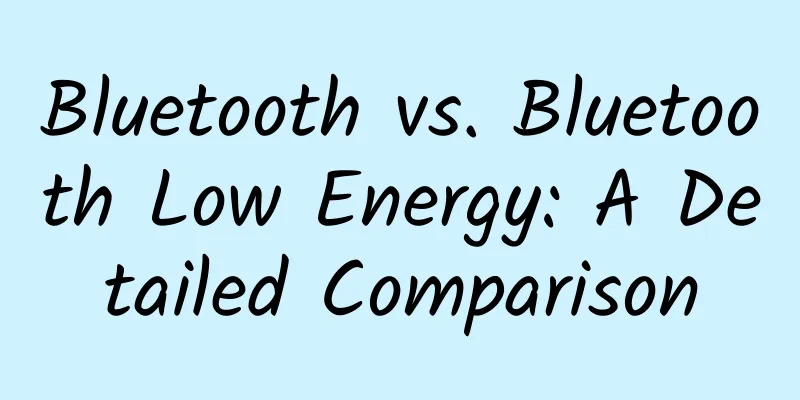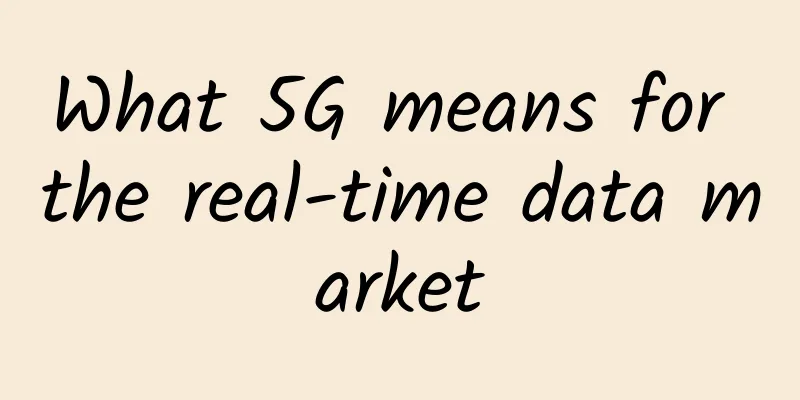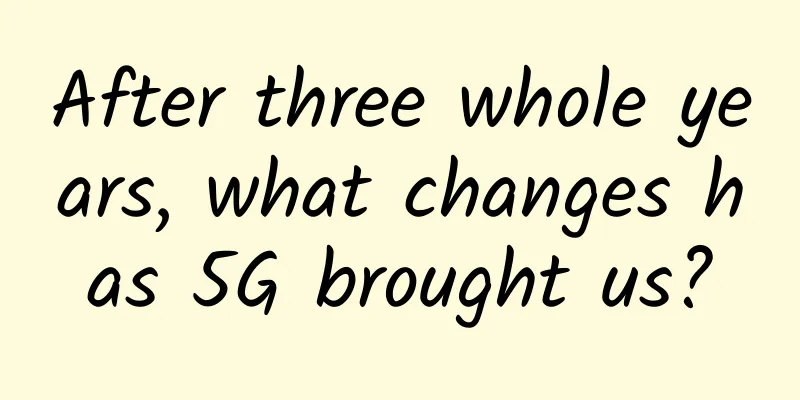Bluetooth vs. Bluetooth Low Energy: A Detailed Comparison

Bluetooth Technology OverviewWhen it comes to the definition of Bluetooth technology, you may know that it is a short-range wireless communication standard. Over the years, the Bluetooth SIG has released various versions of the Bluetooth specification. In fact, keeping all the different Bluetooth versions running properly is not an easy task. Here are the basics of Bluetooth and Bluetooth low energy: What is Classic Bluetooth?The original version, now known as Bluetooth Classic, is the cornerstone of the wireless connectivity we are familiar with. Generally speaking, Bluetooth Classic refers to the original Bluetooth technology available before Bluetooth 4.0 – Basic Rate (BR), Enhanced Data Rate (EDR), and Amplified (AMP). It operates over 79 channels in the 2.4GHz band, enabling devices such as phones and headsets to form a personal area network (PAN) to transmit data over short distances. In fact, Classic Bluetooth is not an official term. It is a convenient reference to the original BR/EDR/AMP technology suite defined by the Bluetooth SIG, showing the dynamic evolution of the technology. Moreover, one of its most notable roles is as the key to pairing audio devices with mobile phones. Classic Bluetooth is becoming more and more important to everyday life, especially as the trend of smartphone devices without headphone jacks continues. The process of connecting two devices via Classic Bluetooth is now a common skill. What is Bluetooth Low Energy?As part of the Bluetooth 4.0 core specification, Bluetooth Low Energy (BLE) represents a huge leap forward in energy efficiency in the Bluetooth ecosystem. Also known as Bluetooth Smart, BLE shares the same management and supervision as the Bluetooth SIG. Its notable features are its lowest power consumption and energy-saving sleep modes. As a result, this enables BLE devices to operate for long periods of time using small coin-cell batteries. BLE operates in the same 2.4GHz frequency range as standard Bluetooth, but uses a unique frequency-hopping spread spectrum (FHSS) scheme. While BLE shares the same radio spectrum as its predecessor, it operates at about half the data rate, achieving a balance between power conservation and effective communication range. In essence, Bluetooth Low Energy is not just a simplified version of Classic Bluetooth, but a specialized and efficient iteration that caters to a range of applications that require energy-efficient wireless connectivity. Bluetooth Classic vs. Bluetooth Low Energy: A Feature-by-Feature ComparisonThe above introduces the basics of Bluetooth and Bluetooth LE. Let’s compare some key technical differences between classic Bluetooth and Bluetooth LE: Battery consumptionWhile Classic Bluetooth is very energy efficient compared to other wireless standards, BLE takes power consumption even further. Classic Bluetooth has higher power requirements, while Bluetooth Low Energy can run for years on just a single coin cell battery. For IoT applications that require sustained low power consumption, BLE is the clear winner. Data transfer rateClassic Bluetooth has a maximum data rate of about 3Mbps, while Bluetooth Low Energy has a maximum data rate of about 1Mbps. However, BLE's lower rate is sufficient for periodic transmission of small amounts of data, a common IoT use case. The higher throughput of Classic Bluetooth comes at the expense of higher power consumption. DelayLatency refers to the time delay required for a data packet to be successfully transmitted. Bluetooth Low Energy actually achieves a lower latency time of about 6 milliseconds compared to 100 milliseconds for Classic Bluetooth. As a result, BLE enables more responsive device communications, which is critical for real-time IoT applications. scopeBluetooth 5.0 significantly increases the maximum range of Bluetooth to about 800 feet or 240 meters. In practice, however, the typical reliable range of classic Bluetooth remains around 30m and the typical reliable range of Bluetooth Low Energy remains around 50m. Outdoors, within line of sight, BLE has an optimal range of up to 150m. Despite the improvements in Bluetooth 5.0, the range is determined by antenna design and transmission power, not differences between the core technologies themselves. TopologyTopology refers to how devices connect and communicate within a network. Classic Bluetooth uses a simple point-to-point topology where two devices communicate directly. Bluetooth Low Energy supports point-to-point as well as star topologies where many devices communicate with a central master device. Additionally, BLE offers broadcasting from one device to multiple devices as well as Bluetooth mesh networking. The additional topology options in Bluetooth LE make its network architecture more flexible and scalable for IoT implementations. Advantages and Disadvantages of Classic Bluetooth and BLEAs Bluetooth has diversified into standards that meet different needs, it is important to understand the advantages and limitations of each. Now let’s summarize some of the main advantages and limitations of LE Bluetooth vs. Classic Bluetooth: Advantages of Classic Bluetooth
Disadvantages of Classic Bluetooth
Advantages of Bluetooth Low Energy
Disadvantages of Bluetooth Low Energy
Bluetooth vs. Bluetooth Low Energy: Different Use CasesClassic Bluetooth and Bluetooth Low Energy are suitable for different applications according to their functions. As discussed earlier, Classic Bluetooth is most commonly used in audio devices such as wireless headphones and speakers, as well as file transfers between devices. In fact, it is intended for direct use by ordinary consumers, who can easily purchase and use these Bluetooth devices. In contrast, BLE is optimized for commercial IoT devices due to its efficiency in periodic data collection with low power consumption. While BLE is also used in personal devices such as fitness trackers that focus on data collection, it is heavily used in healthcare monitors and industrial environments for location services and condition monitoring. BLE's low power consumption and high efficiency make it an ideal choice for IoT use cases involving frequent small data transfers. Considering the above comparison, here are the different use cases for Classic Bluetooth vs Bluetooth Low Energy: Common Classic Bluetooth use cases include:
Bluetooth Low Energy is optimized for compact IoT devices that collect small amounts of sensor data. Common BLE use cases include:
SummarizeIn short, Bluetooth technology will continue to play an important role in the future. Through continuous innovation and progress, it will provide more convenient and efficient wireless connection solutions for applications in various fields and promote the development of digitalization and intelligentization. |
<<: HTTP methods and usage scenarios
>>: Bluetooth, WiFi and Zigbee: Which wireless technology is better?
Recommend
We cannot allow "free-network tools" to threaten network information security
Recently, the official website of the Ministry of...
China's first ISO/IEC artificial intelligence international standard project was approved
In August this year, the AI data quality intern...
Rethinking data center cabling practices to improve energy efficiency
According to a study by researchers from the U.S....
spinservers Mid-Autumn Festival Promotion: 1Gbps unlimited traffic server $179/month - dual E5-2630Lv3/64GB/1.6T SSD/San Jose data center
The Mid-Autumn Festival is coming soon. Spinserve...
Why is there no movement in China for the popular wireless mesh network?
The wireless mesh network that emerged in the sec...
"5G spreads COVID-19" is a hot topic in India. The Indian Ministry of Telecommunications: Where does our 5G come from?
It is reported that since the epidemic situation ...
Donghua IDC comprehensive operation management system
IDC——Innate Investment Gene As social division of...
What kind of ERP system do we need in the post-epidemic era?
In recent years, as the Internet has gradually pe...
What is the use of "5G+AI"? This comic tells you the answer...
[[425909]] This article is reprinted from the WeC...
Kurun: $59/year-2GB/40GB/1TB@500M/China Telecom CN2 GIA/China Unicom CUII9929/China Mobile CMIN2
Kurun is a domestic merchant founded in 2019. Its...
Impact of 5G Networks on Fiber Cabling Requirements
By Kara Mullaley, Corning Inc. [[394802]] 5G netw...
It's over! Something big has happened to TCP!
= [[335538]] This article is reprinted from the W...
HostYun: Hong Kong/Japan/Korea/US VPS monthly payment starts from 16 yuan, optional CN2 GIA/AS9929
HostYun is an old niche personalized IDC founded ...
How big is the bandwidth of 1M cloud server? It is enough for 90% of websites
1M, as the lowest bandwidth configuration of clou...
The dangers and opportunities of 5G construction in my country under the influence of the epidemic
2020 is the starting point for the outbreak of th...



![[cyberMonday] DediPath: VPS starts at $10 per year, dedicated server starts at $108/three months, 1Gbps unlimited traffic, multiple data centers in Los Angeles and other places](/upload/images/67cac00425403.webp)





